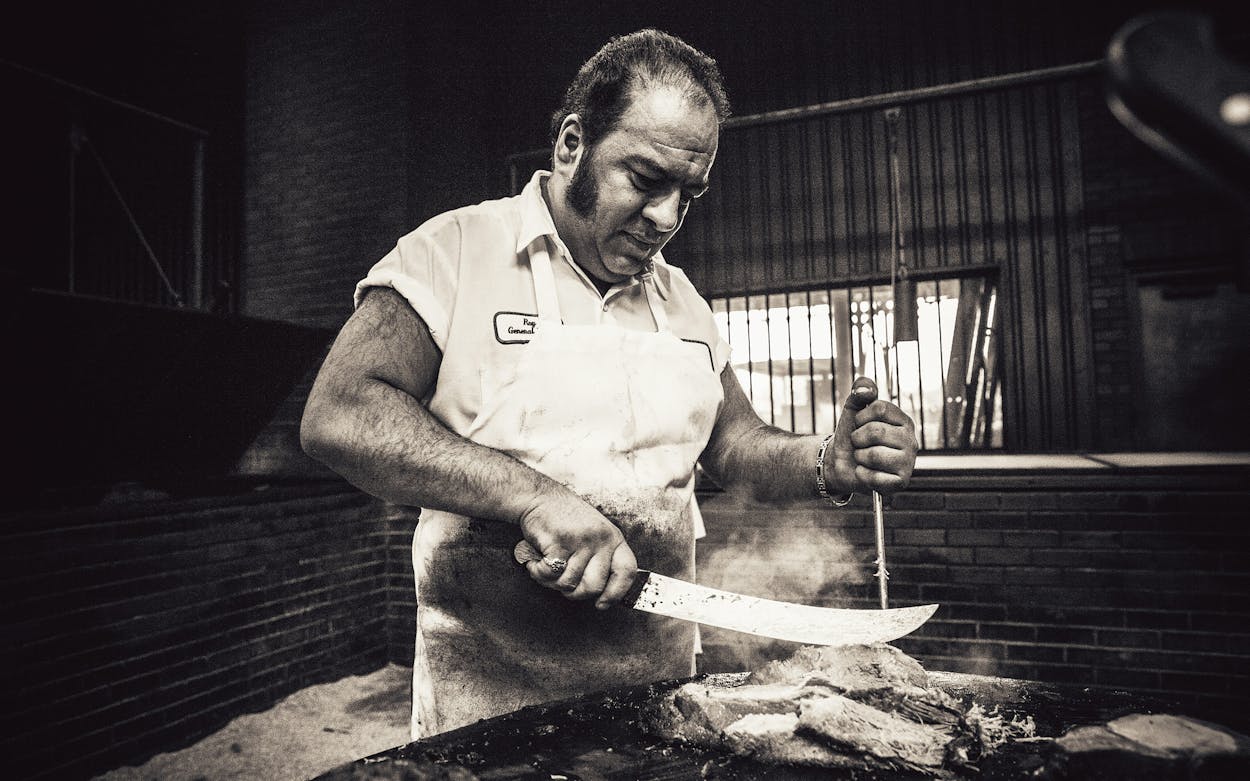“Brisket Is King” read the T-shirts for sale at Terry Black’s Barbecue, the newest joint in Lockhart, a.k.a. the Barbecue Capital of Texas. But that recalcitrant chunk of beef hasn’t always sat on the throne. In a journal he kept in 1999, Roy Perez, who has worked the pits at Lockhart’s most storied establishment, Kreuz Market, since 1987, recorded that on one busy Saturday he cooked a hundred beef shoulder clods—a popular cut back then—and just fifteen briskets. By contrast, on a recent Saturday, Perez and his crew smoked seventy briskets and just twenty shoulder clods.
Kreuz isn’t the only iconic barbecue joint that has witnessed brisket’s seemingly unstoppable rise. The legendary pitmaster Fred Fountaine started working at Louie Mueller Barbecue, in Taylor, in 1946, when clod was the big draw. Mueller began putting brisket on the menu in 1959, but Fountaine resisted at first. Louie’s grandson, current owner Wayne Mueller, was just a child then, but he remembers Fountaine well. “Grandpa told me Fred would intentionally under- and overcook the early briskets with the hopes Grandpa would drop it,” he said several years ago. Yet by 1973, when Texas Monthly first wrote about Louie Mueller’s barbecue, Fountaine had become a convert whose briskets were much sought after. These days the brisket consistently outsells even the famous beef short ribs.
The dominance of brisket on the Texas barbecue scene is hardly news, but the fact that this wasn’t always so is probably surprising to many. The smoke-stained walls, familiar smell of post oak, and rose-colored butcher paper lull smoked-meat fans into thinking of hallowed grounds like Lockhart as unchanging. But tastes shift even at the oldest joints in Texas, and the taste that diners crave these days is usually brisket.
How, exactly, did brisket make its ascent? For much of the twentieth century, barbecue joints in Texas were cooking every cut they could carve out of the half-carcasses that the slaughterhouses delivered to them. It wasn’t until the sixties that brisket made its move. That’s when the practice of packaging individual cuts into boxes was introduced in the beef industry. Pitmasters could now focus on the best and, not incidentally, most-affordable cuts for their operations, and brisket qualified.
Of course, the vast majority of brisket that we ate for decades was choice or select grade. Robby Austin, a category manager for Fort Worth–based food supplier Ben E. Keith, says that ten years ago he didn’t bother to market expensive Prime brisket to barbecue joints. Austin said he noticed a shift in 2013, after Texas Monthly released a Top 50 BBQ list that put Franklin Barbecue—which uses only Prime—in the number one spot.
Since then, the demand for Prime brisket has dramatically increased—and so has the price. In the past five years, to cover their costs, many joints have gone from charging less than $20 a pound for their smoked meat to more than $30 a pound. And customers are paying it, because Terry Black isn’t the only one who thinks brisket is king.
This article originally appeared in the February 2023 issue of Texas Monthly with the headline “The Lean Years.” Subscribe today.
- More About:
- Brisket









